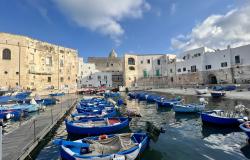Eagles soaring high over an Alpine meadow, wolves hunting at night in a thick beech wood, wild cats hiding in a lush Mediterranean undergrowth. Although human presence shaped and tamed much of the Italian landscape, the country still has some jaw-droppingly wild, rugged corners.
Twenty-four national parks and a number of regional reserves protect these natural wonders, which span from the verdant grasslands of the Alps to the gorse, strawberry trees and prickly pears of southern Calabria in a celebration of the diversity of the Italian landscape, flora and fauna.
Nonetheless, surprisingly few foreigners visit (or even know about) the great Italian outdoors. With Spring coming, now is the perfect time to savour the country’s wildest side. To help you make the most of it, we have selected three of the best national parks to visit (and suggested three more).
Parco nazionale del Gran Paradiso, Piedmont and Aosta valley
 The Gran Paradiso was the first national park to be created in Italy—and with good reason. Its soaring, glacier-modelled peaks, clear mountain lakes and vast mountain meadows are home to the Alpine ibex, a mountain goat with huge recurving horns which was once thought to have magical powers. Partly because of this, the ibex was nearly hunted to extinction in the 19th century. Luckily, a King was at hand to save it.
The Gran Paradiso was the first national park to be created in Italy—and with good reason. Its soaring, glacier-modelled peaks, clear mountain lakes and vast mountain meadows are home to the Alpine ibex, a mountain goat with huge recurving horns which was once thought to have magical powers. Partly because of this, the ibex was nearly hunted to extinction in the 19th century. Luckily, a King was at hand to save it.
In 1919, Vittorio Emanuele III, King of Italy, gifted a vast stretch of land across Piedmont and the Aosta valley, which had once been his personal game reserve, to the Italian State, on condition that it would become a national park. The park was officially created in 1922, and, although they suffered great losses during the Second World War, ibex numbers soon recovered.
 Today, the Gran Paradiso is a verdant mosaic of Alpine life. There are tiny hamlets of stone and wooden houses, royal hunting lodges, and lone chapels linked by old mule tracks. There are stream-carved valleys covered by an intricate maze of beech, downy oak, chestnut trees, Scots pine, spruce and larch forests, which hide wild boar, squirrels and deer, but also wolves, lynx and hermine. And up at the very top of the mountains, are the hardy grasses of the highlands, which shelter white hare and chamois, marmots and eagles, and of course the ibex.
Today, the Gran Paradiso is a verdant mosaic of Alpine life. There are tiny hamlets of stone and wooden houses, royal hunting lodges, and lone chapels linked by old mule tracks. There are stream-carved valleys covered by an intricate maze of beech, downy oak, chestnut trees, Scots pine, spruce and larch forests, which hide wild boar, squirrels and deer, but also wolves, lynx and hermine. And up at the very top of the mountains, are the hardy grasses of the highlands, which shelter white hare and chamois, marmots and eagles, and of course the ibex.
The best place to savour the views and hope to spot the elusive mountain goats, as well as fox, hermine and chamois, is the Nivolet, a 2500m-high plateau carved by the Dora river, which can be reached on foot, bicycle and shuttle bus.
To find out more, visit www.pngp.it
Parco nazionale dell’Abruzzo, Lazio e Molise

If the Gran Paradiso was instrumental in saving the ibex, the parco nazionale dell’Abruzzo, Lazio and Molise plays a crucial role in preserving wolves and bears.
The park, which was founded in 1922, initially covered only the Abruzzese mountain ranges, but was later expanded to include territories from the three central Italian regions.
It is a place of soft, round peaks and sheer, steep slopes, carpeted by wild orchids and irises, native pine trees and, most of all, thick beech forests.
Despite having a chequered history—the park lost some 650,000 trees in just over ten years before logging was prohibited in 1969—the beech woods are now flourishing, and provide shelter and food to the area’s most illustrious and endangered inhabitant, the indigenous brown bear.
 Threatened by poaching and habitat loss, the stocky omnivore, called Orso bruno marsicano, is at risk of extinction. Only some 40 or 50 bears remain in the park, hiding by day and roaming the forests at night in search of fruit, berries, roots and small animals.
Threatened by poaching and habitat loss, the stocky omnivore, called Orso bruno marsicano, is at risk of extinction. Only some 40 or 50 bears remain in the park, hiding by day and roaming the forests at night in search of fruit, berries, roots and small animals.
The woods are also home to another endangered predator—the Italian wolf. During the day, the packs seek refuge in the park’s wildest, most inaccessible corners, from which they emerge at night to hunt for deer and wild boar.
Looking for prey, wolves sometimes range out of the woods into the highland meadows that are the reign of another indigenous species, the Abruzzo chamois. These shy mountain goats live in herds on the highest plateaus, feeding on violet fescue. Their numbers have somewhat recovered in recent years, but they remain at risk of extinction. They are also extremely hard to spot, ready as they are to bolt at the first sign of human presence.
But even though you may not be rewarded by sightings of chamois, wolves and bears, a walk along one of the park’s trails reveals traces of their passage, as well as wild flowers and songbirds, majestic trees and birds of prey. To improve your wildlife-spotting chances, keep absolutely silent.
For more information, see http://www.parcoabruzzo.it/
Parco nazionale dell’Aspromonte, Calabria
 Aspromonte means candid peak in the local dialect, though the Italian meaning of the name—bitter or steep mountain—would not be inappropriate either. The white-hued massif is a rocky pyramid culminating in the rugged peak of Monte Cocuzzo.
Aspromonte means candid peak in the local dialect, though the Italian meaning of the name—bitter or steep mountain—would not be inappropriate either. The white-hued massif is a rocky pyramid culminating in the rugged peak of Monte Cocuzzo.
The park roughly follows the range’s contours, spanning soaring granite slopes and deep canyons carved in the rock by the many streams that criss-cross the area.
In some places, such as the Valli delle Grandi Pietre and the Roccia del Drago, wind and water have shaped eerie or whimsical rock formations that are the backdrop for many local folk tales. The rocks alone would make a visit worthwhile, but the park is an open-air encyclopaedia of Mediterranean flora.
Its outermost reaches are tame countryside of olive groves, citrus trees and mulberries. But the farmland soon vanishes to be replaced by intensely-scented, brightly-coloured shrubs—the vivid yellow of gorse, the dazzling red and oranges of strawberry trees, the lustre black of myrtle and juniper.
 As the roads climb up the mountains, woods take hold of the landscape. There are centuries-old holm oaks and chestnut trees, thick ancient oaks (on the Ionian sea side) and beech and a local variety of black pine (on the Tyrrhenian side), as well as the rooting chain fern, whose origins reach back to 60 million years ago.
As the roads climb up the mountains, woods take hold of the landscape. There are centuries-old holm oaks and chestnut trees, thick ancient oaks (on the Ionian sea side) and beech and a local variety of black pine (on the Tyrrhenian side), as well as the rooting chain fern, whose origins reach back to 60 million years ago.
The lush, varied vegetation provides the perfect habitat for a large number of rare mammals, from wolves to otters and wild cats, and birds, such as Bonelli’s eagle and the Eurasian eagle owl.
One of the best trails to take in the rocks and flora of the Aspromonte (and sight the odd animal) is the one that goes from Natile Vecchio to Pietra Cappa, passing by olive trees, holm oaks, a century old chestnut and the ruins of a Byzantine church.
For more information visit: www.parcoaspromonte.it.
And if you’d rather combine nature with culture try:
 The windswept coastline and turquoise waters of L’Asinara national park, in Sardinia, are just off the pretty 19th century houses and churches of Stintino, a fishing village that holds a number of picturesque religious festivals every year. The thick forests of fir and beech in the Casentino national park tower over the walls and belltowers of Camaldoli’s medieval hermitage. And the vast prairies and intricate holm oak and beech woods of the Monti Sibillini national park are ringed by the medieval walls, castles and village homes of Amandola, Norcia and San Ginesio.
The windswept coastline and turquoise waters of L’Asinara national park, in Sardinia, are just off the pretty 19th century houses and churches of Stintino, a fishing village that holds a number of picturesque religious festivals every year. The thick forests of fir and beech in the Casentino national park tower over the walls and belltowers of Camaldoli’s medieval hermitage. And the vast prairies and intricate holm oak and beech woods of the Monti Sibillini national park are ringed by the medieval walls, castles and village homes of Amandola, Norcia and San Ginesio.
Visit ITALY Magazine's online shop and discover the sweatshirt with the National Park theme. Other cool t-shirts coming soon.









